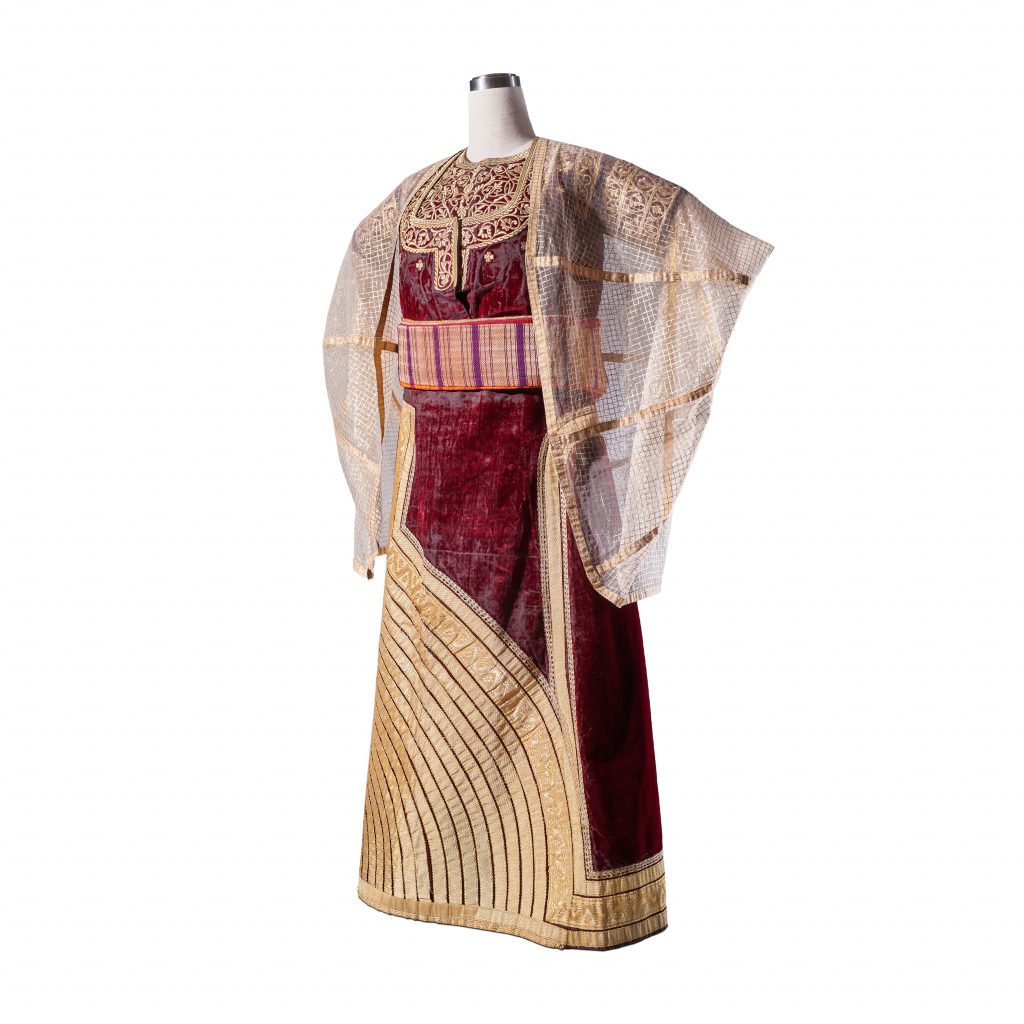Out of exhibition – Bridal Gown )Al-Kiswa Al-Kabira, the “Great Dress”(
Morocco, late 19th century
Silk velvet, gilded metal thread, woven metal ribbons
Gift of Alphonsine Manzanares-Bonacci, France with Simon Skira, the Benisti family, the Markesh family, and the Dahan family, Rabat
Must Know
This dress is an eight piece ceremonial dress worm by Moroccan Jewish brides on the eve of their wedding. Its name, Al-kiswa Al-Kabira, translates to grand costume from Arabic, referring to a Berber dress. Traditionally, the dress is given to the bride by her father as a gift and is worn for the first time on the day before the wedding – marking the beginning of her journey to become a married woman through receiving the ‘right’ to wear the traditional bridal gown.
In Muslim countries the clothes sewn for couples about to wed, especially for the bride, were grander than all other garments. This Moroccan gold and silver bridal gown expresses the deep bond that Jews (who were expelled from Spain) had to their material heritage. The gown, which comes from Renaissance-era Spain, shows how Jews remained committed to their customs even many years after their expulsion. The gown’s embellishments are meant to symbolise good virtues, acting as charms that guide the bride through the wedding, for example, the hamsa on the skirt and the two birds by the vest’s collar protect the bride.
Gift of Alphonsine Manzanares-Bonacci, France with Simon Skira, the Benisti family, the Markesh family, and the Dahan family, Rabat
More Info
The wedding gown included are a skirt (zeltita), a breastpiece (ktef), a short jacket with short sleeves, a pair of long wide sleeves, a silk belt (hzem), a silk scarf (fechtul), shoes similarly decorated to the dress, and a headband (jemar) which is embroidered with pearls and Judeo-Spanish emeralds and rubies and meant to cover the hair.
All elements within this garment are a representation of a fruitful and blessed marriage. Dark reds symbolise abundance and fertility while black wards off evil, to name a few – all in all symbolising protection and joy for the bride and her marriage. Silk velvet and gold resemble materials from which Torah mantles are made. Additionally, the skirt wraps around the body like the Torah scrolls – a metaphor for the transformation of the bride into the carrier of Law. Embroidered into the fabric are curves rising from the hem into a triangle, symbolising fertility.
While aesthetics vary among traditional Al-Kiswa Al-Kabira gowns, a common motif on the jacket is a spiral or solar wheel symbolising the cycle of life and of eternity- a symbol vital for an authentic dress. Another important motif is the palm-tree, symbolising the tree of life (Etz Chaim) which connects to the Garden of Eden as chronicled in the Torah. Symbolising both God and the Torah (or Law), the embroidered tree on the gown is a reference to the Jewish place of worship and is important in traditional Jewish lives.
The importance of the concept of initiation, where the bride is initiated into her new married life and her role of becoming the carrier of tradition, is central to Jewish Moroccan weddings. The garment alone is of great significance in the ceremony and enables the carrying of tradition.

